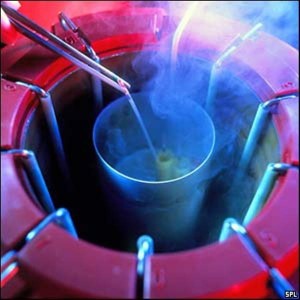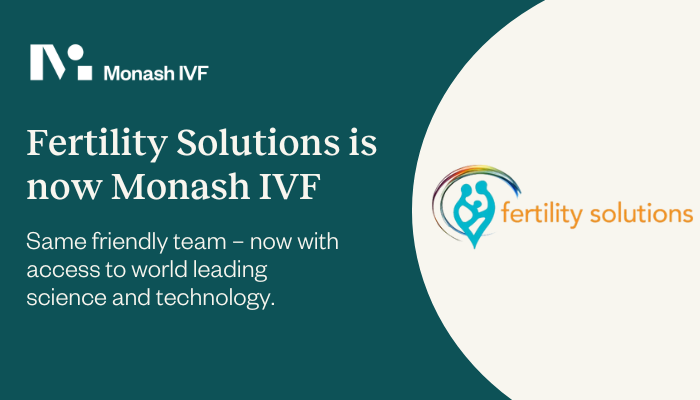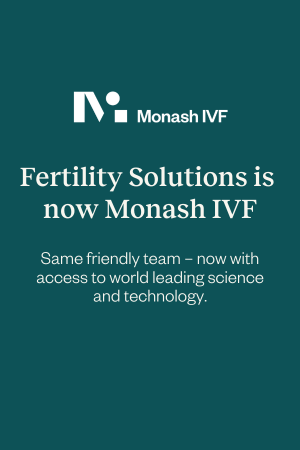In a fresh stimulated IVF cycle, excess embryos that reach a suitable blastocyst stage by day 5/6 are frozen and are available to be used in a subsequent Frozen Embryo Transfer (FET) cycle. When a frozen embryo transfer (FET) treatment cycle is initiated patients and are not exposed to further stimulated cycles unnecessarily. Due to scientific improvements in the techniques associated with freezing embryos, namely vitrification, embryos can be frozen (or vitrified) with very reliable recovery and survival rates. On average, it is expected that approximately 85-90% of vitrified embryos will survive the freezing and thawing process.
In addition, recent studies are suggesting that FET cycles may yield a higher pregnancy rate than their fresh counterparts. This is most likely due to the changes in the endometrium (uterine lining) that occur during the stimulation process in an IVF cycle. Therefore, if a vitrified blastocyst embryo can be transferred into the uterus during a natural cycle, a patient’s chance of success is as good, if not better than their chance of pregnancy during a fresh stimulated IVF cycle.
Cryopreservation is a term used to describe thee freezing of biological material for future use. At Fertility Solutions cryopreservation is routinely used to store sperm and embryos, and more recently human eggs.
The techniques involved in embryo cryopreservation were pioneered here in Australia in the mid 1980’s. Prior to this any embryos created through IVF that were not used were discarded. Freezing embryos allows us to offer you the chance for further pregnancies, whether your first cycle is successful or not, without having to go through the whole IVF process again. We aim to produce extra embryos for freezing from all our IVF cycles (unless specifically requested not to by the couple).
What Happens During Embryo Freezing?
Freezing involves placing the embryos in a cryoprotectant fluid which protects them during the freezing process. The degree of success of freezing and thawing embryos comes from the efficient removal of water from the cells. When water freezes it expands and forms ice crystals which are very destructive to the delicate cellular components. Cryoprotectants have been specially designed to get deep inside the cells and replace the water. The presence of the cryoprotectant means that crystals do not form during the freezing process and therefore the embryo can safely withstand the dramatic reduction in temperature.
Why Don’t All Embryos Get Vitrified?
Not all embryos will survive the process of being vitrified and thawed. It is disheartening when you are planning to have an embryo transfer (and possibly have had to take medications to get your body ready) and the embryos do not survive the thaw. In order to reduce the risk of this happening, your IVF scientist will only freeze the embryos that have a high chance of surviving the freeze – thaw process.
Frozen Embryo Transfer (FET) Cycles
In order for a frozen embryo transfer cycle to be successful, it is important that the uterine lining (endometrium) is at the right stage of development to support embryo implantation. There are a few ways that we can assist this process.
“Natural” FET Cycles
One option is to closely monitor the woman’s natural cycle through a combination of blood tests, ultrasound scans, and sometimes urine testing to establish when ovulation has occurred. The transfer is then scheduled to match the age of the embryo at the time it was vitrified. This generally is only suitable for women, who have regular, predictable cycles,
Using a woman’s natural cycle can have its problems. The main risk is that ovulation may be missed and therefore the cycle cancelled. To minimize this risk you may be required to have daily blood tests and regular scans so optimal timing is established. This is the preferred option at Fertility Solutions.
Medications Used In A FET Cycle
There are generally 2 options for hormonally treated FET cycles, both aim to prepare the uterine lining for an embryo.
- Clomiphene (Clomid) or Letrozole tablets, stimulate follicle development.
- Hormonal Replacement Therapy (HRT), using oestrogen and progesterone hormones in combination.
Clomid/Letrozole Cycles. Clomid or Letrozole tablets are given in a dose as prescribed by your doctor, daily for 5 days beginning between days 2-5 of your cycle. An ultrasound and blood test are usually performed around day 9-11 of your cycle to see if follicles are beginning to develop on the ovaries. The follicles are then tracked until they either ovulate on their own, or a trigger injection needs to be given to make certain that ovulation occurs at an appropriate time. The embryo transfer can then be scheduled to occur. Sometimes additional hormones are also given after the embryo transfer to help keep to uterine lining in optimal condition to encourage embryo implantation.
While Clomid or Letrozole cycles are more predictable than natural cycles, they can still can have problems. Some women don’t ovulate despite using Clomid/Letrozole. Clomid/Letrozole have side effects, which are mostly well tolerated. As there are eggs being produced in the ovary and this egg(s) is ovulated, there is a possibility that a spontaneous pregnancy can occur from unprotected sex during the cycle prior to your embryo transfer, with the possibility of a multiple pregnancy.
We highly recommend that you abstain from unprotected sex from your first scan (day 9-12 of your cycle), until after the embryo transfer (unless your nurse has recommended otherwise).
Hormone Replacement Therapy (HRT) Cycle
This approach is often used for women who don’t have cycles at all or who are to be recipients of donor eggs or embryos.
Don’t worry this has nothing to do with being menopausal! When your period begins you will start on a synthetic form of oestrogen called ethinyl oestradiol, and increase the dose as the cycle proceeds to mimic what happens in a natural cycle. This produces thickening of the endometrium which is monitored by ultrasound scan.
In all FET cycles we aim to see an endometrial thickness of at least 8 mm prior to the embryo transfer being scheduled.
The next hormonal step in a natural cycle is the addition of progesterone. We reproduce this by giving you progesterone pessaries or gel (Crinone). This completes the maturation of the uterine lining so that it is ready to receive an embryo. Once the pessaries are commenced, the embryo transfer can then be scheduled.
Both hormones are continued until the pregnancy test result is known. If you are pregnant then they will continue on for some time (~11-14 weeks of pregnancy). If you aren’t pregnant then you can stop them once you have spoken to your nurse about your pregnancy test result.
HRT cycles are generally very predictable making it easier for you and the clinic to arrange everything well in advance. The hormones are very like your own natural hormones making it uncommon for women to experience significant
Potential Problems with Embryo Freezing
As mentioned above not all embryos will survive the process of freezing and thawing. Embryos that survive however, appear to be completely normal in all aspects. It is encouraging to note that the chance of achieving a pregnancy once an embryo has thawed successfully is the same as with a fresh embryo.
One of the concerns about freezing embryos is the future fate of the embryos in the long term. What if a couple’s relationship breaks down? What if the woman wants to use the embryos but her partner doesn’t? A cycle might be successful and the couple decides they want no further children. What happens to any frozen embryos then?
Couples do have the option of donating any embryos that they no longer intend to use to other couples, or allowing them to succumb (taking them out of storage and allowing them to thaw), or donating them for research. We strongly recommend that you discuss the possible scenarios with your partner in advance and ask “what if?”.
How Long Can An Embryo Stay Frozen?
Experience with long term storage of frozen embryos is limited because it was only widely used in Australia from the late 1980’s onwards. There are reports of successful pregnancies as long as 12 years after the embryos were originally frozen. The biggest issue is not how long they will survive, but for how long will a couple still be intending to have embryo transfers.
Fertility Solutions Policy is that any stored embryos be used within 5 years of being frozen with the option of requesting an additional 5 year extension. The maximum storage period is 10 years.
Surviving the Thaw
About 90% of embryos that are frozen will survive the process of thawing. Thawing usually occurs the day of your transfer with enough time being allocated so that there is time to assess the embryo in the laboratory and see if it has expanded to it pre freezing condition – in some instances embryos will also start to divide again. Your embryos are usually frozen all at the same time but in separate straws so that we can thaw them one at a time. This is useful, especially if the first embryo thawed does not survive this process.
Occasionally none of the embryos will survive the thaw and there will be no embryos available for transfer. If this happens, all your medications will be ceased and we will ask you to come in for a follow up talk with your nurse and a scientist about this cycle and also other options for future cycles. We will also ask the counselor to contact you for a chat.
Consenting For Treatment
You (and your partner), will be required to sign a new Consent for EACH FET treatment cycle. NO EMBRYOS WILL BE THAWED UNTIL THE COMPLETED CONSENT HAS BEEN RECEIVED.
Cancelled Cycles
Occasionally FET cycles are cancelled for various reasons:
- Uterine lining is not considered adequate (<6mm)
- Ovulation is missed (more common in a natural cycle), therefore thawing of the embryo and transfer cannot be accurately timed
- Embryo fails to thaw successfully (and there are no remaining embryos stored as back up)
- Conditions not favourable for an embryo transfer i.e. fluid collection in the uterine cavity.
The decision to cancel a cycle will always be discussed with you. We do not cancel a cycle without good reason and will only suggest this when conditions for embryo transfer and subsequent pregnancy are not optimum.
If your cycle is cancelled there will be a cancellation fee depending upon when in the cycle it was cancelled. Talk with the accounts department so you know exactly what your costs are.
If you have any questions about your Frozen Embryo Transfer Cycle, you are encouraged to contact your specialist, your primary nurse or a scientist by phoning 07 5478 2482 or 1300 FERTILITY (337 845).
How To Arrange A Frozen Embryo Transfer Cycle
If you have embryos frozen, it is necessary for you to arrange a consultation with your Fertility Specialist to discuss which cycle type is best suited to your particular situation. This appointment should be made whilst you are not in cycle to ensure that you are eligible for an IVF Medicare rebate. At the appointment, a clinical consent will be signed with your fertility specialist and a cycle plan written. Costs relating to the FET cycle can be discussed with the Fertility Solutions accounts department.
After the cycle plan and clinical consent have been received by Fertility Solutions, it is necessary for you to make an appointment to see your Fertility Nurse Specialist. This appointment MUST be made prior to day one (1) of your next period, and is recommended to be coordinated with your Fertility Specialist appointment. This will allow your nurse specialist to discuss in more detail the FET cycle your Fertility Specialist has recommended and to sign a general FET consent.
Please note that NO FET Cycle will be started without both a signed clinical and general consent.
If you have any questions about your Frozen Embryo Transfer Cycle, please contact your specialist, your primary nurse, or scientist by phoning 07 5478 2482 or 1300 FERTILITY (337 845). You may also enjoy reading our Frozen Embryo Transfer Cycle brochure online.



